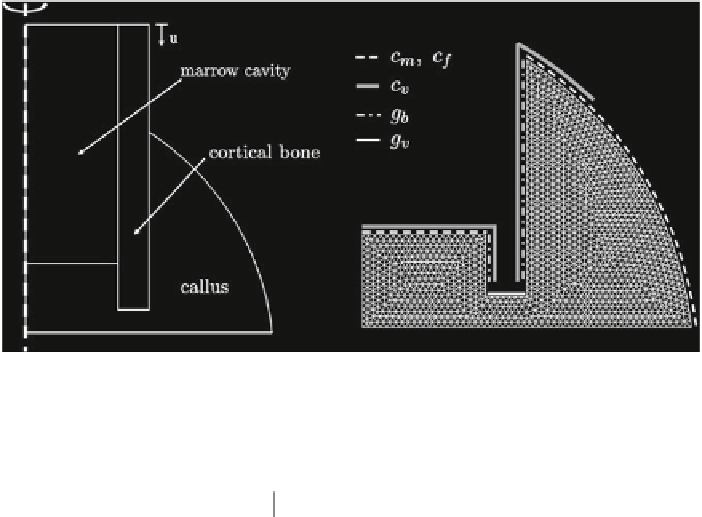Biomedical Engineering Reference
In-Depth Information
Fig. 2
Axisymmetric representation of sheep metatarsal fracture site (
left
), meshed callus region
with indication of boundary conditions for cell and growth factor reserviors in the surrounding
tissue (
right
)
Ta b l e 1
Mechanical properties of biological tissues
Tissue type
Young's modulus [MPa]
Poisson ratio
1,7000
a
0
.
3
a
Cortical bone
1,000
b
3
b
Immature bone
0
.
10
b
47
b
Cartilage
0
.
2
b
0
.
47
b
Connective tissue
Granulation tissue
0
.
18
0
.
47
2
a
Marrow
0
.
3
a
Prendergast et al. [
2
]
b
Bailòn-Plaza et al. [
9
]
boundary as an axial load and with the stiffening of the callus the interfragmentary
movement decreases.
The mechanical stimulus is calculated from the results of the mechanical sim-
ulation according to Sect.
2.1
and is applied to the biochemical simulation for the
respective day of healing. The local Young's modulus is determined by a rule of mix-
ture from the Young's moduli of the individual tissues shown in Table
1
. The Poisson
ratio of granulation tissue is set to near incompressibility, taking into account a high
content of fluid. The excitation levels defining regions of equivalent strain, where
stimulation of the various cell activities takes place are shown in Table
2
. Addi-
tionally to stimulation of stem cell differentiation to osteoblasts, chondrocytes and
fibroblasts, there is also a maximal strain assumed for the development of new blood
vessels, given by the values for
3
v
4
v
ʷ
and
ʷ
.





















